Swimming beetle: How does this predator work and why is it the main maniac of our reservoirs? (10 photos)
Horror authors try to create images that can terrify any reader. They invent creepy creatures that live in the depths of the ocean, on the outskirts of the Universe, or even in the minds of their victims. Or they could just take a walk to the lake, and their new horror would have no equal. After all, it is there that the true creature of the nightmare is hidden - the swimming beetle. 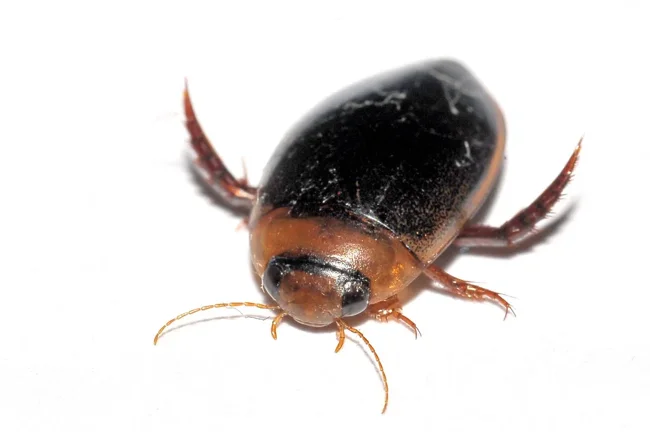
It’s not difficult to be deceived by its cute appearance: its smooth shiny body, spherical beady eyes and glorious hairy legs will not leave anyone indifferent. In addition, it is a rather large beetle. The largest representatives of the family reach 4.5 centimeters in length. And big people are always kind, right? Not in this case. The swimmer is a nightmare of international lakes. The entire beetle is built in such a way as to overtake the victim, no matter where it runs. 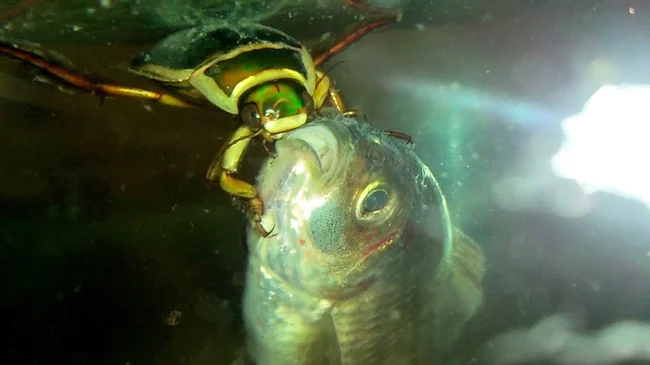
In total, more than 4,000 species of these beetles are found in the world. And all of them, without exception, are carnivores. And they really don’t care who they devour today. The main thing is that we are alive. Bugmaniacs have strong mandibles with which they can tear dinner into pieces. 
There is no use fighting them. Swimmers calmly attack animals that are several times larger than themselves. Frogs, newts and fish are common swimmer snacks. And even if the enemy puts up worthy resistance, the battle and spilled blood will attract the attention of other swimmers. The fight will turn into a feast, lasting until only memories remain of the poor fellow. 
You won't be able to escape from the swimmer either. Its hind legs are turned into powerful oars, and air bubbles are hidden under the elytra, allowing the predator to dive into the depths of the lake without fear. You won’t even be able to fly away - this little chthon will fly after you. At night, swimmers fly between lakes in search of an easy life and tasty prey. Well, if one is not found, then they will not disdain each other. 
The only place where you can escape from the beetle psychos is in reservoirs with larger predators. But if predatory fish try to feast on the swimmers, they will be disappointed. A caught beetle secretes a poisonous liquid, forcing the offender to let it go. 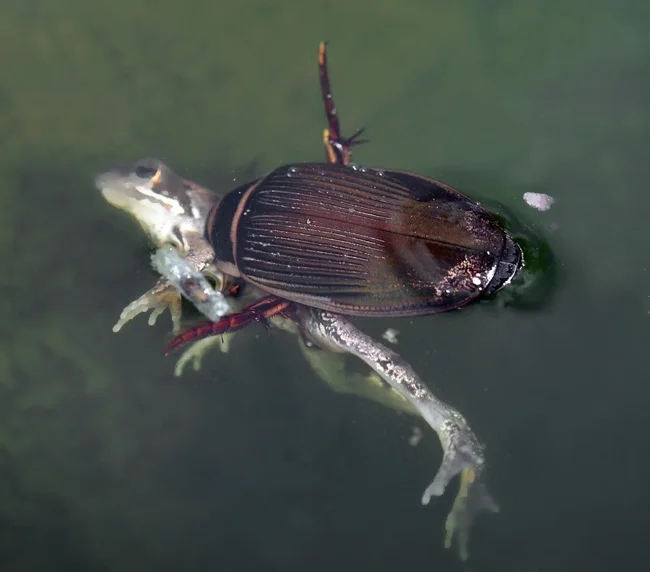
More than eating, swimmers love only to reproduce. Therefore, if an appetizing fellow turns out to be a seductive lady, suction cups are used. The male holds the female underwater until he gets tired of it, although he himself is on the surface. Therefore, it is not surprising that the love of swimming swimmers often ends in death. 
Sucker foot for capturing females.
The lucky ones who managed to survive rush to lay eggs in the tissue of the nearest plant and forget about this nightmare. However, the bug is still unable to lay 1,500 eggs at a time, so the process drags on for several days or weeks. 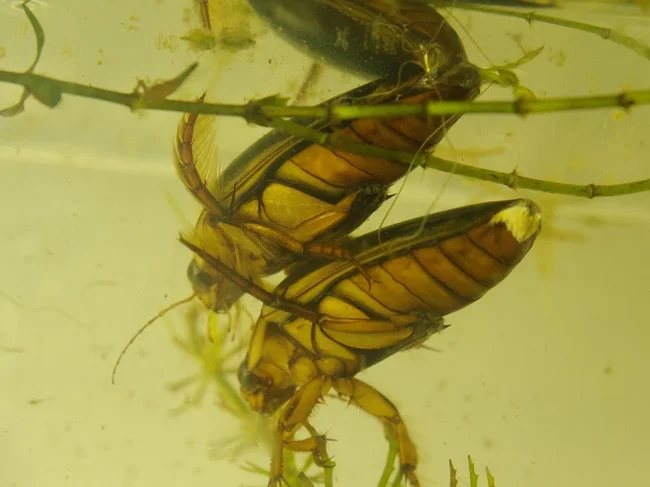
Next is the will of Fate. Depending on the water temperature and the specific species, the larvae of swimming beetles can hatch in 8 days, or even in 40. With their appearance, the babies put monsters from horror films to shame and behave accordingly. They are even more voracious and aggressive, but less agile. So the diving beetle juveniles do not pursue prey, but wait in ambush. The insect sits on the nearest bush and exposes its butt above the surface of the water. So it provides itself with oxygen through spiracles on the abdomen. 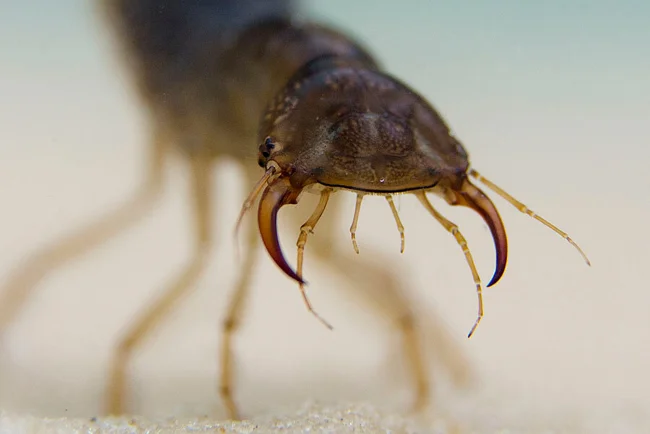
When hunting, the larvae of diving beetles rely on stealth and speed in a dash. And they learned how spiders feed: predators inject gastric juice into their prey, and then drink it without leaving the cash register. The larvae feed until they reach a size of 6.5 cm, after which they crawl onto land. 
The larvae of swimming beetles do not have good vision, so they attack everything. And with their hunting skills, this is more of an “everything” problem.
On the shore, young swimmers peacefully build houses out of saliva and mud so that they can pupate in them calmly. After a couple of months, a fully-fledged baby beetle is formed, still soft and white. In this form, he remains to spend the winter in the house, and in the spring he again goes to terrorize the inhabitants of the reservoirs.
